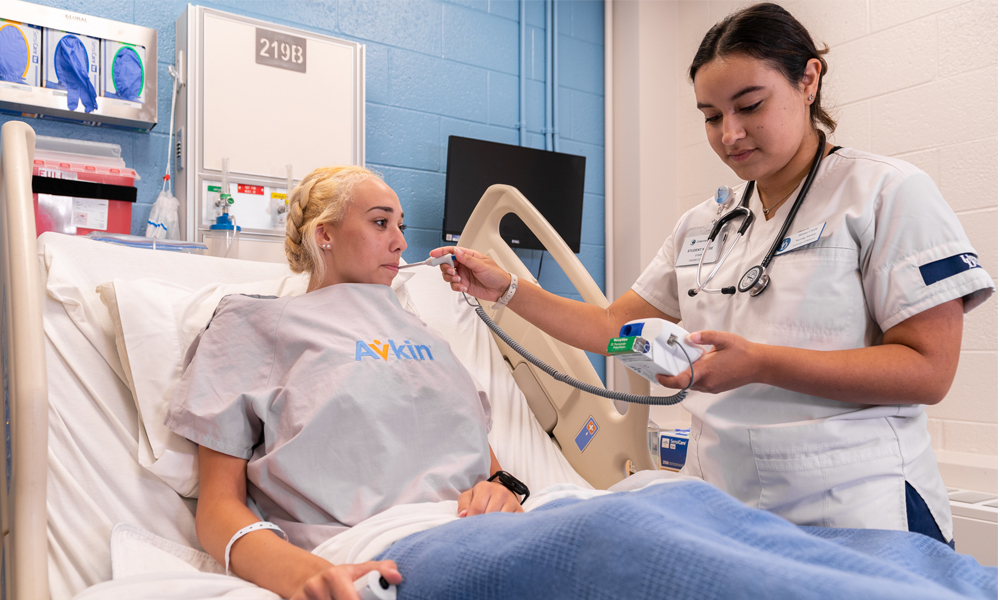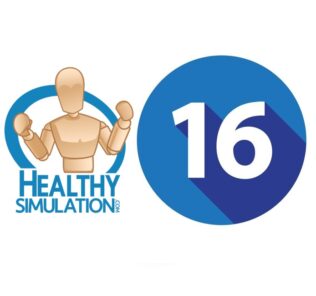Avkin’s Vital Signs Package Helps Clinical Simulations Maintain Realism
Patients don’t announce their vital signs to their healthcare providers. Nor does an ominous voice from on high. However, many healthcare simulations, including competency-based human simulations, do just that. This break in realism can distract both learners and Simulated Participants from the goal of the clinical simulation, harming learning objectives. Some programs have opted to simply use real devices, and use the Simulated Participant’s actual vital signs in the simulation to combat this break from realism. This may work until a cardiac arrest simulation reports a patient blood pressure of 120/80.
According to an October 2011 article in the academic journal Human Factors, “transfer from the first task (the simulation) to the second, real-world task occurs most efficiently when the two tasks have identical component activities. The more elements that are shared between the two tasks, the better the transfer.”
Sponsored Content:
Now, simulationists no longer need to break fidelity for learners to receive this vital information. Avkin has partnered with medical simulation device companies Innov2Learn and KBPort to produce the Vital Signs Package. Students will collect all necessary vital signs in a patient encounter with this package while using true-to-life technology to ensure there is no break in realism.
KBPort’s BPSim is a blood pressure cuff simulator. With it, students will practice skills such as proper stethoscope use, valve release, and monitoring the pressure gauge for needle bounce. The heart rate, systolic and diastolic readings are all controlled via Bluetooth connection.
The oximeter and thermometer simulators from Innov2Learn were explicitly designed to replicate actual equipment used in everyday practice. Preprogrammed readings on both easy-to-use devices ensure lifelike fidelity. Readings can even be adjusted via app to represent patient decline in an ongoing scenario.
Finally, the Avtone, Avkin’s wearable auscultation simulator, provides realistic, controllable heart and lung sounds. Using their own stethoscopes, healthcare’s next generation will be exposed to various scenarios, with a library of sounds accessible via Bluetooth. Designed to be worn by a Simulated Participant, the Avtone anchors the patient interaction in reality.
Sponsored Content:
Included in the package is the Avband, a device designed to allow educators to communicate with their SPs without breaking the fidelity of the simulation. The Avband is controlled via Bluetooth, allowing the educator to use different color LEDs and vibrations to discretely cue the SP. It also includes a button on the Avband itself allowing the SP to signal the educator should they feel unsafe for any reason.
This partnership was forged to bring the most true-to-life simulation experience possible. Combining the wearable Avtone and the lifelike simulators from KBPort and Innov2Learn will create a simulation nearly indistinguishable from a real-world patient encounter. The realism provided by these products working together ensures a learning experience like no other.
More about Avkin
Avkin exists to give healthcare learners the skills to rebound from failure. The company seeks to understand gaps in the learning experience, strives to adapt to the changing healthcare field, and focuses on the fundamental skills required of any healthcare profession. These are accomplished with a multipronged approach based on four tenets of simulation: build, train, create and wear. Consultation from Avkin’s education team has helped schools build their own sustainable, budget-friendly SP program.
Avkin also trains SPs and simulation faculty in best practices and effective feedback, ensuring learning objectives are met. Using the Simulation Subscription Library or custom-designed virtual telehealth simulations, Avkin works to create learnable situations ready for use by educational professionals. Finally, Avkin produces lifelike wearable devices which allow learners to immerse themselves in the learning experiences.
“[The future of nursing simulation is a mix of AR and simulated participants for training. There is no denying that VR/AR technology is just getting better. The key to better preparing learners for the clinic with this technology is to acknowledge that they will still not replace human interaction. I think the future of simulation is using VR and AR technology as an interactive way to complete repetitive tasks, while using simulated participants to learn the human element, which can so easily be overlooked by cool tech,” explained Amy Bucha, chief scientific officer at Avkin.
Avkin has consistently been recognized for innovation in the healthcare simulation field. Its prototype of the Avtrach, a tracheostomy simulator, won the First Place Technology and Innovation Award from the Society for Simulation in Healthcare, leading to Avkin’s founding. It’s been recognized as a Best University Startup by the National Council of Entrepreneurial Tech Transfer, and even won a Golden Stethoscope award from a Shark Tank Edition of the Dr. Oz show.
Rooted in the Latin words “akin” and “vera,” Avkin combines the two. With Akin meaning “of similar character,” and vera meaning “truth,” the company’s goal has always been to create the best quality products that allow for education to be “of similar character” and “true” to what the learners will experience in real life.
Learn More About Avkin
Lance Baily, BA, EMT-B, is the Founder / CEO of HealthySimulation.com, which he started in 2010 while serving as the Director of the Nevada System of Higher Education’s Clinical Simulation Center of Las Vegas. Lance also founded SimGHOSTS.org, the world’s only non-profit organization dedicated to supporting professionals operating healthcare simulation technologies. His co-edited Book: “Comprehensive Healthcare Simulation: Operations, Technology, and Innovative Practice” is cited as a key source for professional certification in the industry. Lance’s background also includes serving as a Simulation Technology Specialist for the LA Community College District, EMS fire fighting, Hollywood movie production, rescue diving, and global travel. He and his wife live with their two brilliant daughters and one crazy dachshund in Las Vegas, Nevada.
Sponsored Content:
















